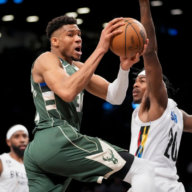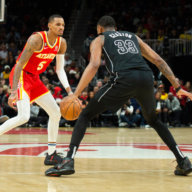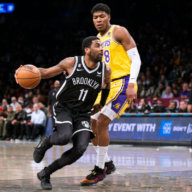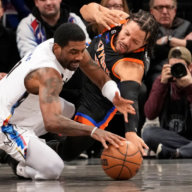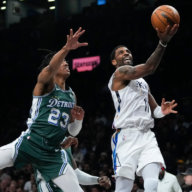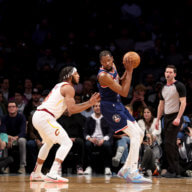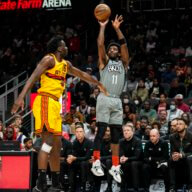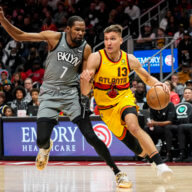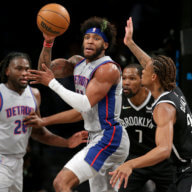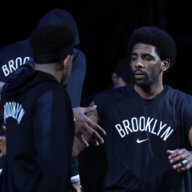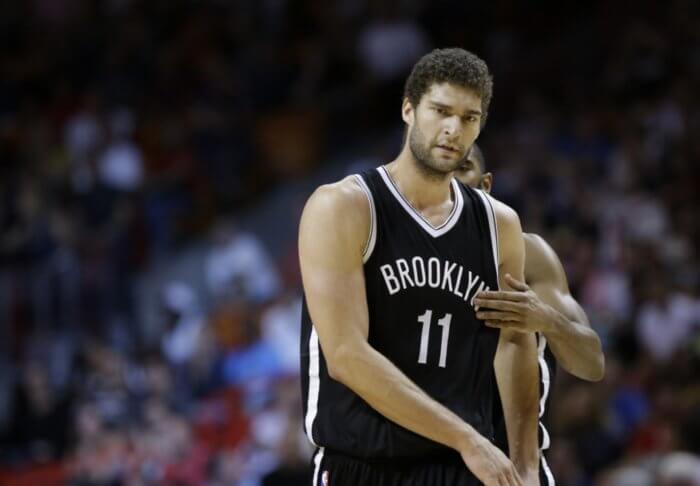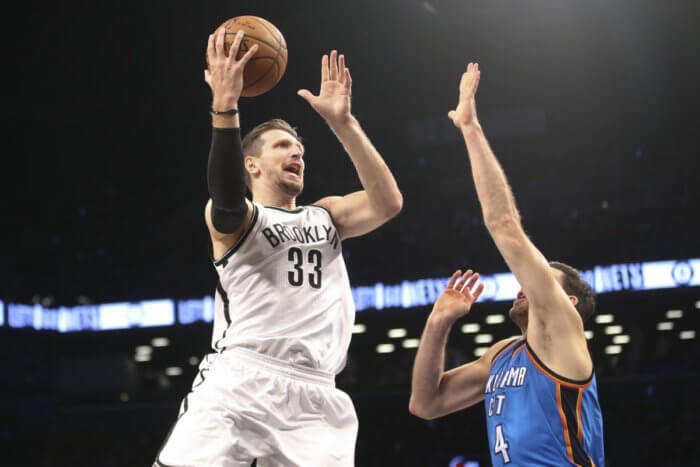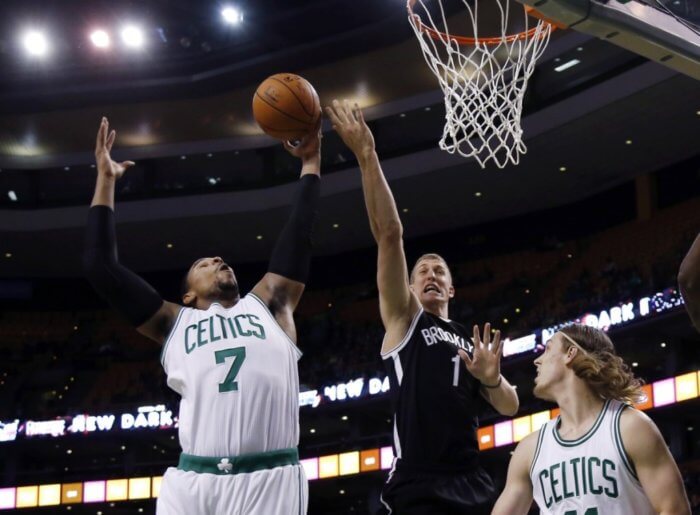It has been just over a month since the Vince Carter trade and now that the emotion of losing Vince is gone, I think it is a good time to look at the trade from a statistical point of view. By using a couple different formulas, we are going to be able to see if the Vince Carter trade benefits us, hurts us, or if it just comes out a wash.
How are we going to do this? Well, I have been reading through the great book Basketball On Paper (A must read if you are even remotely interested about advanced statistics in basketball), and the stuff I am learning makes me just want to learn more. During a Google search, I came across this case by the books’ author Dean Oliver (who now does this kind of stuff working for the Denver Nuggets). The case discusses whether or not the Hornets should trade away Rex Chapman to the Cavs. The end decision in the case is yes, and I am going to go through the case using the pieces of the Vince Carter/Ryan Anderson for Courtney Lee/Tony Battie/Rafer Alston trade.
Now I know the case is dated (from 1990), but it still provides a pretty good template of what to do. The only change here is that I will be using John Hollinger’s PER to determine a players worth rather than using Manley’s formula which was developed in 1987. We are going to be using the same basic models that the case uses; The Trade Value Model (Part 1) and the Total Win Model (Part 2).
Trade Value Model
The trade value model is a screening method that estimates how much each player is worth in terms of units of Approximate Value (AV). Each player has an established AV, which can be determined by using Hollinger’s PER Weights (These are found in the book Basketball On Paper). This is where I am deviating from the case a bit. Instead of calculating Credits just by adding up the good stuff and subtracting the bad, I am weighting each stat using values that John Hollinger came up with. This isn’t too big an issue because looking at the way Credits/AV is calculated, because many people believe John Hollinger’s weights (which are used to determined PER values) are the best we have right now. (In a perfect world, I would be able to get PER in here somewhere – I tried a couple times -, but I was unable to because it would have required me to adjust all the other formulas to account for this. This is why I settled on using Hollinger’s weights – which aren’t as good, but are as close as we can get)
Credits = PTS + 0.85*OREB + 0.35*DREB + 0.79*AST + 1.2*STL + 0.85*BLK – 1.20*TO – 0.85*Missed FG – 0.45*Missed FT – 0.41*PF
AV = Credits^3/4/21
AVs are calculated for each of the past three seasons, then an established AV level is calculated using a weighted average:
Established AV= EAV = [3*(AV’09)+2*(AV’08)+(AV’07)]/6
There is a problem though. Both Courtney Lee and Ryan Anderson were rookies last year, so their Established AV is just their AV for the 08-09 season. Also, Tony Battie missed all of the 07-08 season, so I used the last three seasons that he played in.
When determining a player’s Trade Value, you are not only looking at his established playing ability, but you also need to look at how much longer he is going to be able to perform at that level. Now this is tough, but Dean Oliver comes up with a simple formula that combines EAV and a factor Y to come up with the final Trade Value:
Trade Value = (EAV – Y)^2*(Y + 1)EAV/190 + Y^2*(EAV/13)
where
Y = 27 – 0.75*Age.
Plugging in all the numbers, this is what everyone’s Trade Values look like (click the view the full version chart)-
Going to Orlando:
Vince Carter: 20.44
Ryan Anderson: 54.88
Total: 75.31
Going to New Jersey:
Courtney Lee: 42.59
Rafer Alston: 7.46
Tony Battie: 2.96
Total: 53.01
**Now seems like a good time to note that these numbers aren’t anything really tangible. They don’t stand for total points added, wins, or anything like that. These numbers are just a way to evaluate trades.**
After running these tests and looking at the test results in the sample case, it seems these numbers and formulas really value youth. My guess would be because when you are trading for a 21 year old, you are getting them for a good 9/10 years (assuming there are no injuries and they re-sign). As opposed to older players who probably have 2-3 years left in the tank. Also younger players are heading towards their prime while the older players are heading away from their prime.
Now, these Trade Values assume that each of these players are going to age the same way. This isn’t too accurate because you got both rookies and aging vets included in this deal. The way that this is handled is by adjusting your Y value. Dean Oliver has two formulas he suggests:
Quickly Aging Form:
Y = 29 – 0.85*Ageor
Slowly Aging Form:
Y = 24 – 0.65*Age
Ok, so here are the values with all 5 players on a Quickly Aging Form and on a Slowly Aging Form compared with the normal:
Alright, so the numbers look different, but why? Well, let’s have Dean Oliver tell us:
The table shows a couple things. First of all, the fact that 8 out of 12 entries in the Cleveland matrix are bold indicates that the players they are offering are probably more valuable than Chapman. Second, the fact that three of the entries where Chapman looks better are in the ‘Quickly Aging’ row indicates that better knowledge of the futures of the ballplayers (his Y factor) is probably more important than better knowledge of his established level of play.
This is a very unfortunate result because predicting the length of a player’s career is extremely difficult. A player can retire on a whim in the middle of his career. He can suffer a freak accident either on or off the court. His coaches may sour on him and refuse to play him. He may quit basketball to protest the declining state of the environment. Players can do odd things. [Note: The trade value formula attempts to take into account typical aging effects on quality of play, including injuries that might lead to one missed season or chronic pains that might lead to several missed games per year.]
[Technical Note: Notice that Chapman has less trade value using the slowly aging Y formula than using the quickly aging formula. This indicates that the slowly aging formula ‘thinks’ that Chapman’s level of play is so low that he will be out of the league before natural aging decreases his play. The quickly aging formula starts his aging before his poor ability gets him dropped from the league. Which of the two versions is correct is impossible to know. The standard version of Y doesn’t show this bias as much. Also notice that there is more variation in the trade value for the Cleveland players than for Chapman. This is because there are two players involved on Cleveland’s end as compared to one on Charlotte’s end. This difference in variations would be even larger if Chapman were either a couple years older or a bit better or worse player.]
So the general consensus is that the Magic are getting the more valuable group of players…by a wide margin…so why deal if you are New Jersey? Well, you have to take into consideration factors that can’t be determined by statistical analysis. That factor is we are clearing up a ton of cap space, for next year’s offseason. That is added value for the Nets that can’t be calculated. And with the trade being so lopsided considering these factors, one must assume that the the Nets value this cap-space highly.
This isn’t the only way trades can be evaluated. On Monday we are going to be looking at the Vince Carter trade by using the total win model.
Now I know what you are thinking. Why on earth did you make me read all of this if the answer was as obvious as it was? Well, for one I thought it would be a good idea to introduce some statistical analysis methods to you guys (I plan on introducing some more) and I thought the Vince Carter trade would be a more relevant example. Now any time we are hit with a trade rumor, we can break out our calculators and look at the trade values.



